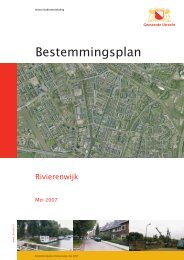freakonomics
freakonomics
freakonomics
Create successful ePaper yourself
Turn your PDF publications into a flip-book with our unique Google optimized e-Paper software.
But if you were to have spent a little time around the housing projects where crack was so<br />
often sold, you might have noticed something strange: not only did most of the crack<br />
dealers still live in the projects, but most of them still lived at home with their moms.<br />
And then you may have scratched your head and said, “Why is that?”<br />
The answer lies in finding the right data, and the secret to finding the right data usually<br />
means finding the right person—more easily said than done. Drug dealers are rarely<br />
trained in economics, and economists rarely hang out with crack dealers. So the answer to<br />
this question begins with finding someone who did live among the drug dealers and<br />
managed to walk away with the secrets of their trade.<br />
Sudhir Venkatesh—his boyhood friends called him Sid, but he has since reverted to<br />
Sudhir—was born in India, raised in the suburbs of upstate New York and southern<br />
California, and graduated from the University of California at San Diego with a degree in<br />
mathematics. In 1989 he began to pursue his PhD in sociology at the University of<br />
Chicago. He was interested in understanding how young people form their identities; to<br />
that end, he had just spent three months following the Grateful Dead around the country.<br />
What he was not interested in was the grueling fieldwork that typifies sociology.<br />
But his graduate advisor, the eminent poverty scholar William Julius Wilson, promptly<br />
sent Venkatesh into the field. His assignment: to visit Chicago’s poorest black<br />
neighborhoods with a clipboard and a seventy-question, multiple-choice survey. This was<br />
the first question on the survey:<br />
How do you feel about being black and poor?<br />
1. Very bad<br />
2. Bad<br />
3. Neither bad nor good<br />
4. Somewhat good<br />
5. Very good<br />
One day Venkatesh walked twenty blocks from the university to a housing project on the<br />
shore of Lake Michigan to administer his survey. The project comprised three sixteenstory<br />
buildings made of yellow-gray brick. Venkatesh soon discovered that the names<br />
and addresses he had been given were badly outdated. These buildings were condemned,<br />
practically abandoned. Some families lived on the lower floors, pirating water and<br />
electricity, but the elevators didn’t work. Neither did the lights in the stairwell. It was late<br />
afternoon in early winter, nearly dark outside.<br />
Venkatesh, who is a thoughtful, handsome, and well built but not aberrationally brave<br />
person, had made his way up to the sixth floor, trying to find someone willing to take his<br />
survey. Suddenly, on the stairwell landing, he startled a group of teenagers shooting dice.









